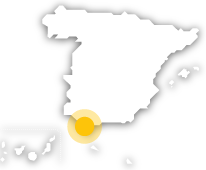
During Easter Week, the old town in Cadiz is transformed into an open-air museum with a display of floats and sculptures, some of which are more than five centuries old.
A total of 52 floats and more than 10,000 people walk the city streets during the ten days between the Friday before Palm Sunday to Easter Sunday. Along their route, many processions pass by the Cathedral, next to the sea, creating a beautiful and unique image when this happens at sunset.On Holy Wednesday, Cadiz's oldest sculpture, Señor de la Sentencia (dating from the end of the 15th century), is taken out. Given their age and quality, a note should also be made of the sculptures of Christ from the Humildad and Paciencia brotherhoods, and the Column. Good Friday sees one of most eagerly awaited moments: the procession of Cristo de la Buena Muerte, which leaves the church of San Agustín and parades in the dark, illuminated only by the light of its four torches. Good Friday is also marked by the live performance, at the Oratorio de la Santa Cueva, of “The Seven Last Words of Christ” by Joseph Haydn, the orchestral work that the composer wrote at the end of the 18th century to be played in Cadiz every year for Easter.The celebration in Cadiz stands out from similar events in Andalusia in how the floats are carried: they are carried on the shoulder, without any protection, by means of sticks that cross them from front to back, and walking with broader movements. This makes the sculptures appear to sway as they move. Another characteristic element are the staffs, which in the past were used to hold the float when stopped, and which are now used to set the rhythm and beat with the metallic sound produced when they hit the ground.
Easter Week in Cadiz
Cádiz, Cadiz (Andalusia)
* To be confirmed
Activa JS



